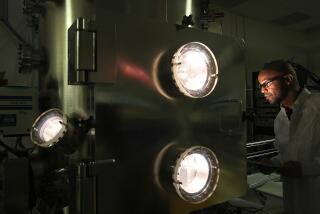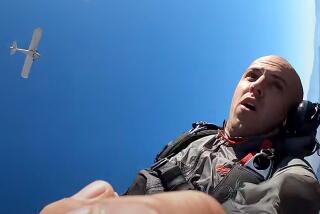First FAA-approved drone delivery takes medicine to rural Virginia
Days after the first Federal Aviation Administration-approved drone delivery successfully dropped off medicine at a Virginia health fair, researchers behind the mission are already looking ahead to future uses of this technology -- in humanitarian crises.
The delivery Friday took 24 packages of medicine and other medical supplies to an annual health fair in Wise County, Va., in the middle of coal country in Appalachia.
More than 1,500 patients typically come out to this free event. Medical supplies are usually driven on mountain roads to the location, which can take an hour and a half to reach, said Jon Greene, associate director of the mid-Atlantic aviation partnership at Virginia Tech, a partner in the event.
Virginia Tech’s unmanned aircraft systems test site program is one of six in the nation approved by the FAA.
The medications’ journey started in Tazewell County in southwest Virginia, where they were flown in a NASA aircraft that can be remotely operated from the ground, though it always has a safety pilot on board.
After the NASA aircraft landed at Lonesome Pine Airport in Wise County, a hexacopter drone operated by Australian start-up Flirtey Inc. flew the supplies 0.7 miles to the health clinic.
A one-way flight to the clinic took only 2 1/2 minutes, and it took three trips to deliver all the packages, said Matt Sweeny, chief executive of Flirtey.
------------
For the Record:
July 20, 8:58 p.m.: An earlier version of this article spelled Flirtey CEO Matt Sweeny’s last name as Sweeney.
------------
“I think this will be remembered as a Kitty Hawk moment,” he said of the drone delivery by citing the location of the Wright Brothers’ first powered flight. “I’m really happy about how well it went.”
Traffic in the area was stopped so the drone never flew above cars or people, Greene said.
This mission was the first in a series of research flights to improve humanitarian response capabilities, he said.
“We foresee not just medicines, but delivering small amounts of food and water to people that are isolated in emergency situations,” Greene said.
Frank Jones, deputy director of NASA Langley’s Research Services Directorate, said unmanned aircraft systems, also known as drones, are here to stay.
“We need to find out how to utilize them in the right way,” he said. “The more we do this, the more we’re educating the public on how they can be used, and we’re finding out how to do that safely.”
For more business news, follow @smasunaga.







